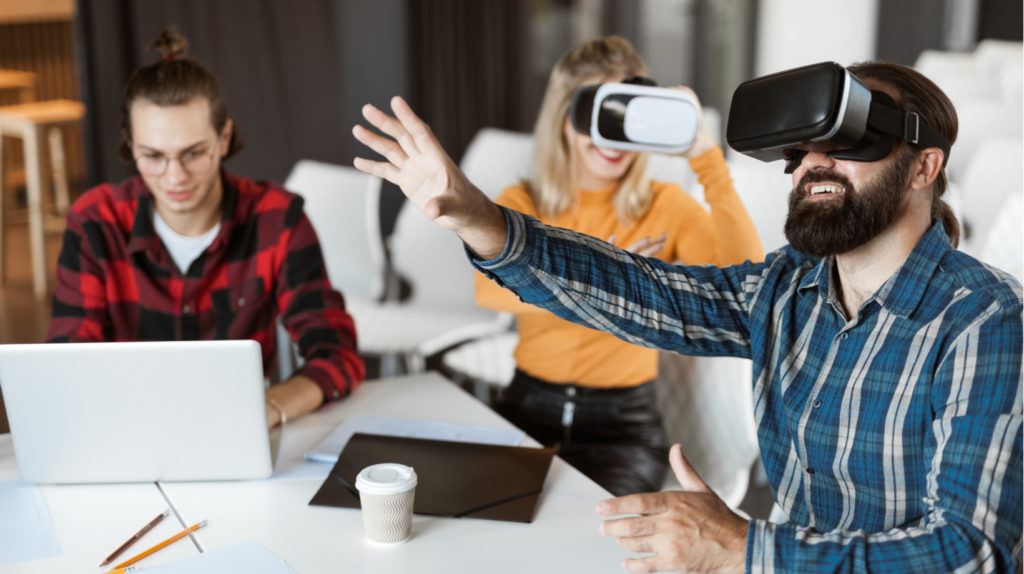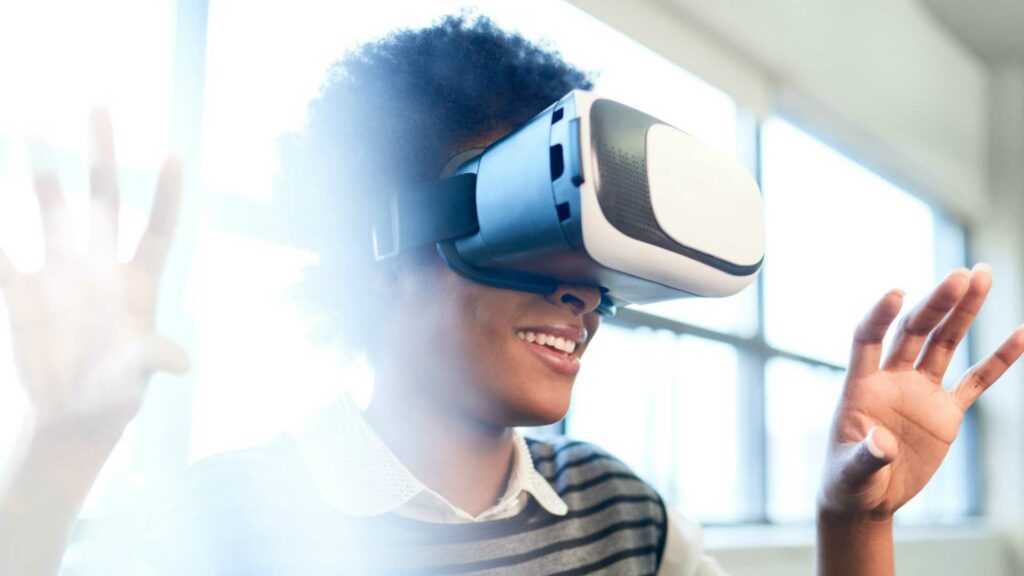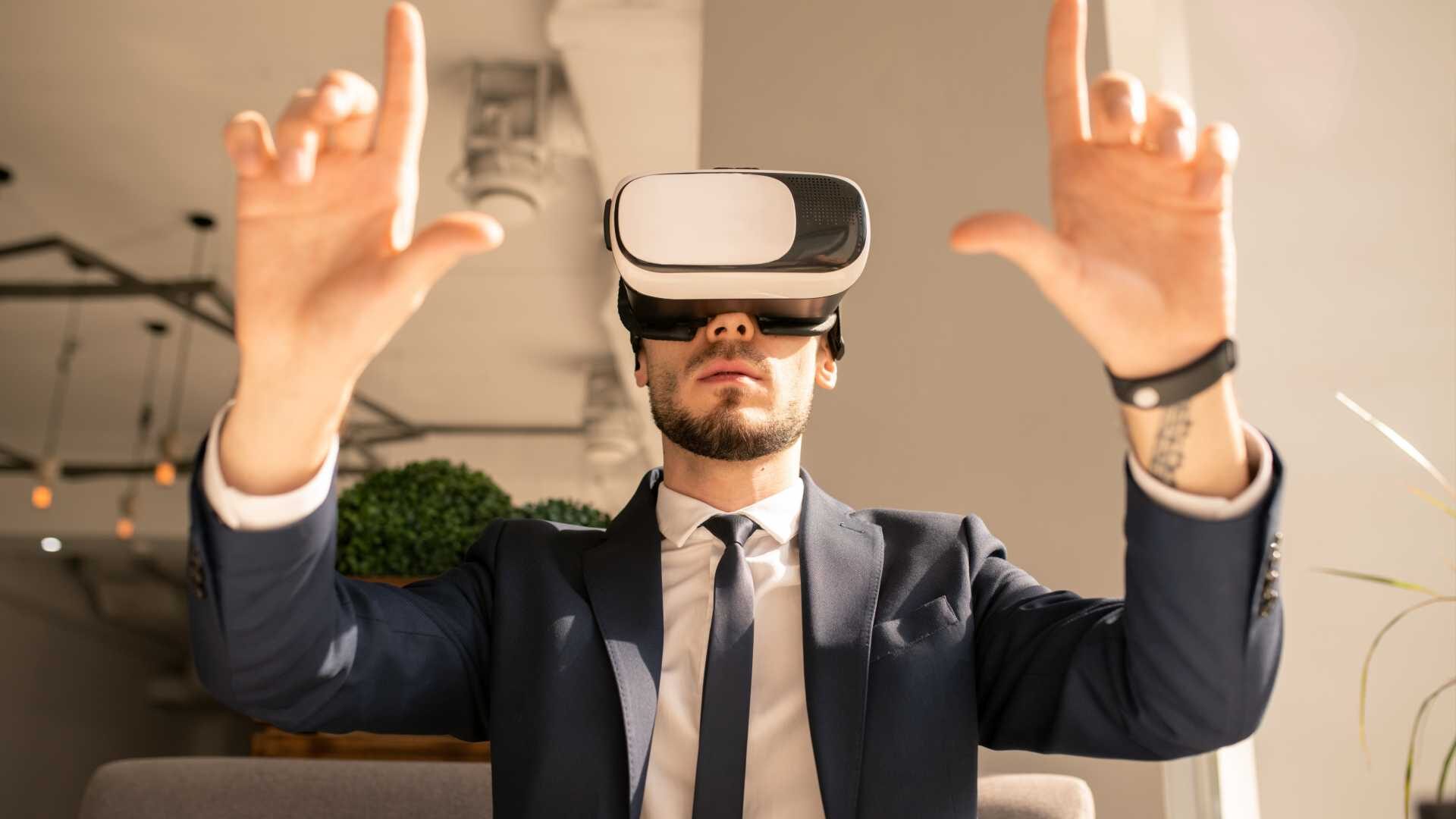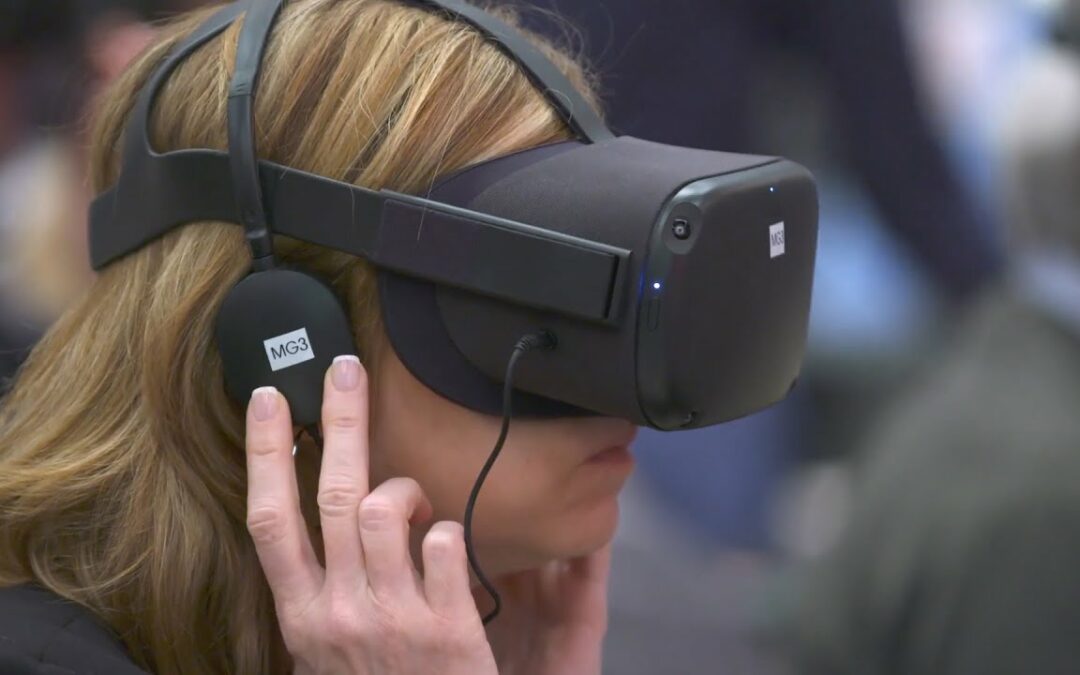Assume you were sent to Mars as a robot avatar.
Other individuals are wandering around like robots around you in this virtual reality (VR), computer-simulated world.
Your aim is to collaborate to conquer a variety of obstacles and flee the planet in a space pod. The operation is only successful if all of the robots escape, not if one or two of them take off on their own.
But this isn’t a video game. It is, however, a training session in which you and your coworkers are all wearing VR headsets.
RELATED: Meta: Facebook Founder Introduces Virtual Reality Service For $7.99 Per Month
As far as awaydays go, it certainly sound more enjoyable than sitting in a conference room for hours on end listening to your superiors tell you about your company’s big plans for the coming year.

The voyage to Mars is a team-building exercise called Apollo, which was created by Jenson8, a UK startup that specializes in VR-based training platforms.
In the simulation, each working team has three or four attempts to find out how to escape. Participants can also experience Apollo from a variety of perspectives, including as a leader, a normal robot, or an observer.
After the VR goggles are removed, the group is asked to discuss the various factors that contributed to their success or failure.

“When people are immersed in this immersive experience, it removes many preconceived notions that they carry with them into the workplace,” says Bryan Barnes, Jenson8’s chief of research and development. “And it allows them to show up as themselves rather than trying to play that work character.”
Participants can develop a better grasp of their function in the group, for better or worse, he adds. And that this can lead to open and honest discussions that help establish a more successful team.
RELATED: Can Mind-Controlled Virtual Reality Games Assist Stroke Patients?
Pandemic lockdowns forced millions of workers to work from home or via video conference, and now training is altering as well.
Since March 2020, the regular Zoom calls have made us all realize that we don’t need to be in the same room for meetings. And this is becoming increasingly true for training courses.

With the advancement of VR technology, an increasing number of businesses are requiring employees to put on a pair of VR goggles when it is time for them to take a break or have their skills and knowledge renewed.
VR goggles are entertaining for a short time, but many people find them cumbersome and uncomfortable to wear for extended periods of time.
Mike Wynn oversees VR-based training at Bank of America. He claims that it is particularly appealing to younger staff, who have become accustomed to technology via years of playing intense computer games.
“We’ve relied on the same traditional training methods for the longest time,” he says, “but people have changed, and the way they absorb and digest information has most certainly changed.”
“Attention spans are not what they were a decade ago, or even longer. We now want information rapidly and to be able to see it rather than just read it.”

Is there, however, evidence that VR training is more effective? According to a research conducted last year by the accounting firm PricewaterhouseCoopers, employees learn four times faster in VR than in a classroom. According to the report, employees were 1.5 times more concentrated in VR classes.
New Tech Economy is a series that investigates how technological innovation is shaping the new emerging economic landscape.
Edwina Fitzmaurice is in charge of VR technology at Ernst & Young, another worldwide accounting firm. Another advantage of VR-based training, she claims, is that users may practice more readily.
“People like the idea that they can have another go, that they can learn again,” she explains. “You have much higher retention rates and engagement scores.”

“You get much better results because people can do it repeatedly and feel like they’re in it.” We all know that learning involves more than just reading.”
Others argue that VR training is often more cost effective and safer than traditional training, especially when teaching someone to conduct a dangerous job. Rather than putting someone in a high-risk area like an oil rig, chemical plant, or hospital emergency room, they can first go through a VR simulation.
Furthermore, many VR training systems provide feedback to the user rather than a human boss. VirtualSpeech, situated in London, is one such company, offering VR-based training for public speaking and leadership skills.
It is stated that certain people are more open to negative feedback if it comes from a computer. And, according to Sophie Thompson, the founder and CEO of VirtualSpeech, computers are often superior at providing it.

“People aren’t good at providing honest feedback, so you have to ask explicitly.” A machine, on the other hand, is unconcerned with your emotions.”
VR training, however, is not without its detractors. For example, some users claim that wearing VR goggles causes them to feel elated or queasy, while others complain of headaches or eyestrain.
Ms Fitzmaurice of Ernst & Young feels that the sector need additional oversight. “Getting the right balance between governance and innovation is critical,” she argues.
“You have to allow enough for innovation to happen, and you also want enough governance – actually, one feeds the other.”
Download The Radiant App To Start Watching!
Web: Watch Now
LGTV™: Download
ROKU™: Download
XBox™: Download
Samsung TV™: Download
Amazon Fire TV™: Download
Android TV™: Download

